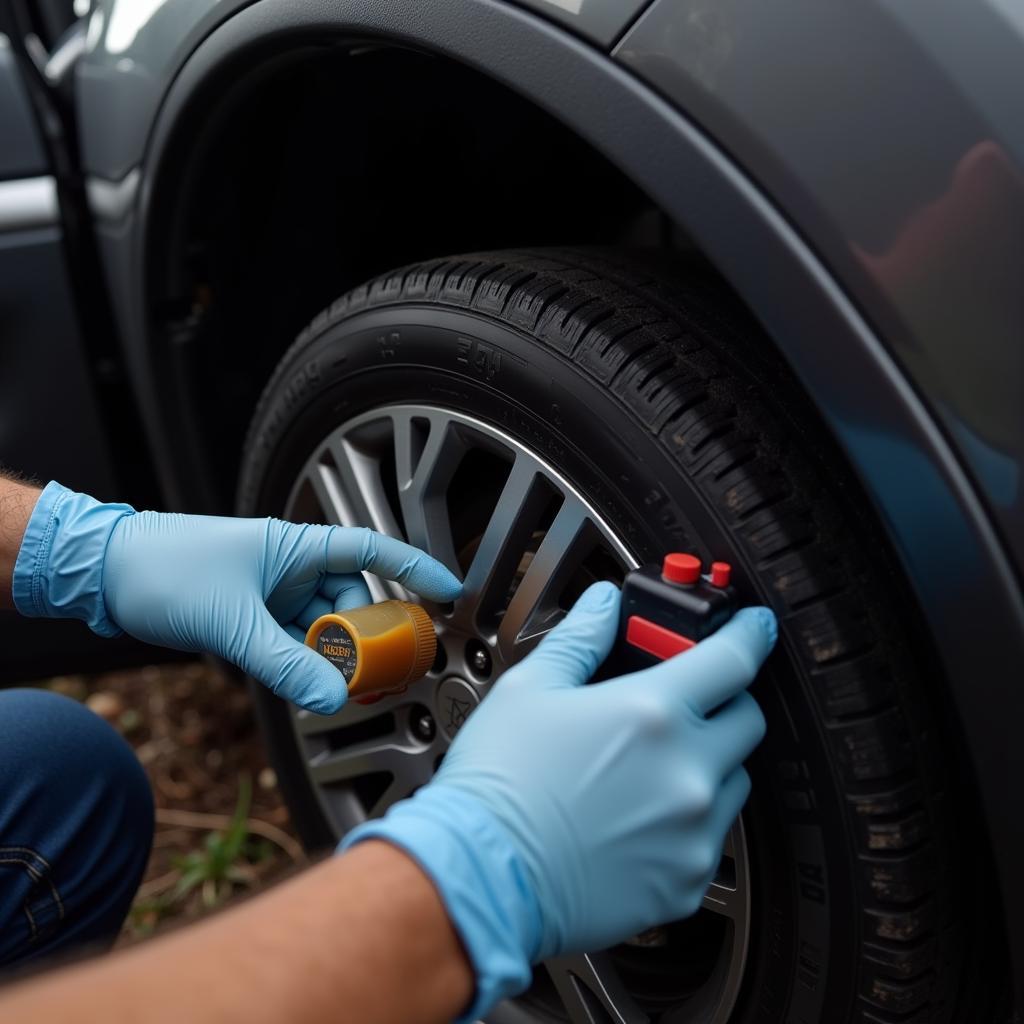The brake warning light on your Mitsubishi Outlander dashboard is a crucial safety feature designed to alert you to potential issues with your braking system. Ignoring this warning light can lead to dangerous driving conditions and potentially expensive repairs. This comprehensive guide will delve into the common causes of a Mitsubishi Outlander brake warning light, provide practical solutions, and equip you with the knowledge to address this issue effectively.
Common Causes of a Mitsubishi Outlander Brake Warning Light
Several factors can trigger the brake warning light in your Mitsubishi Outlander. Identifying the root cause is crucial for implementing the correct solution. Here are some of the most common culprits:
1. Low Brake Fluid Level
One of the primary reasons for the brake warning light to illuminate is low brake fluid. Brake fluid is the lifeblood of your braking system, responsible for transmitting the force applied to the brake pedal to the wheels, ultimately slowing down or stopping your vehicle. A leak in the brake lines, worn brake pads, or a faulty brake master cylinder can lead to low brake fluid levels.
What to do: If you suspect low brake fluid, it’s crucial to check the brake fluid reservoir level immediately. The reservoir is typically located near the firewall on the driver’s side of the engine compartment and has a clearly marked minimum and maximum level indicator.
Expert Insight: “Never attempt to drive your Outlander with low brake fluid,” warns John Miller, a seasoned automotive technician with over 20 years of experience. “Doing so can result in complete brake failure, putting you and others at risk.”
 Checking Mitsubishi Outlander Brake Fluid Level
Checking Mitsubishi Outlander Brake Fluid Level
2. Worn Brake Pads
Brake pads are designed to wear down over time with use. When the brake pads reach a certain level of wear, a sensor within the brake pad assembly triggers the brake warning light. This sensor is a safety mechanism to alert you that it’s time for a brake pad replacement.
What to do: If your brake pads are worn, it’s essential to have them replaced by a qualified mechanic as soon as possible. Continuing to drive with worn brake pads compromises braking performance and can damage the brake rotors, leading to costly repairs.
3. Faulty Brake Caliper
The brake caliper houses the brake pads and pistons, playing a vital role in the braking process. A seized or sticking brake caliper can cause uneven brake pad wear, reduced braking performance, and trigger the brake warning light.
What to do: Diagnosing a faulty brake caliper often requires inspection by a qualified mechanic. They will assess the caliper’s condition, check for leaks, and determine if it needs repair or replacement.
4. ABS (Anti-lock Braking System) Issue
Modern vehicles like the Mitsubishi Outlander are equipped with an Anti-lock Braking System (ABS) that prevents wheel lock-up during hard braking, enhancing vehicle stability and control. If the ABS system malfunctions, it can trigger the brake warning light.
What to do: When the ABS system malfunctions, it’s crucial to have it inspected by a qualified mechanic who can diagnose the issue using a diagnostic scanner. The mechanic can then pinpoint the faulty component within the ABS system and recommend the necessary repairs.
 Mechanic Diagnosing Mitsubishi Outlander ABS System
Mechanic Diagnosing Mitsubishi Outlander ABS System
5. Electrical Problem
While less common, an electrical issue, such as a faulty brake light switch or wiring problem, can also trigger the brake warning light.
What to do: If you suspect an electrical issue, it’s best to consult with a qualified mechanic who can diagnose the problem using specialized equipment and resolve the electrical fault.
Conclusion
The brake warning light in your Mitsubishi Outlander is a critical safety indicator that should never be ignored. Addressing the underlying cause promptly is paramount for maintaining your vehicle’s braking performance and ensuring your safety and the safety of others on the road. Regular vehicle maintenance, including brake inspections, can help prevent many of these issues from occurring in the first place. If your brake warning light illuminates, don’t hesitate to seek professional assistance from a qualified mechanic to diagnose and resolve the issue effectively.

